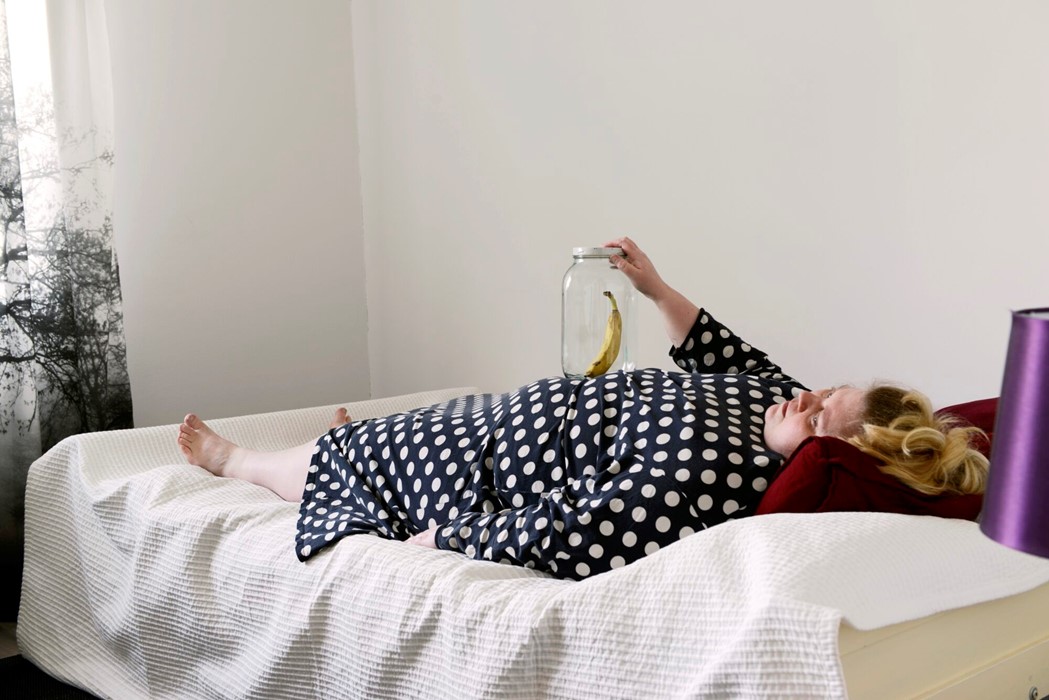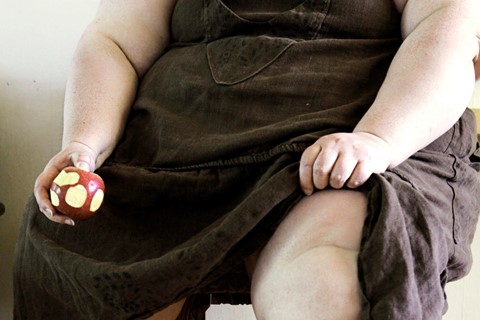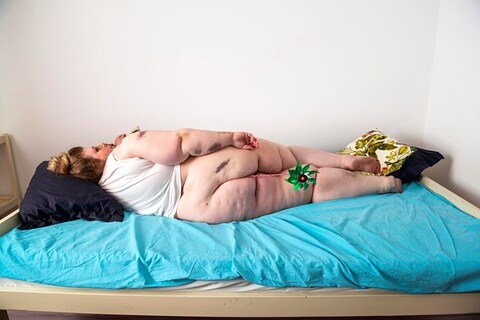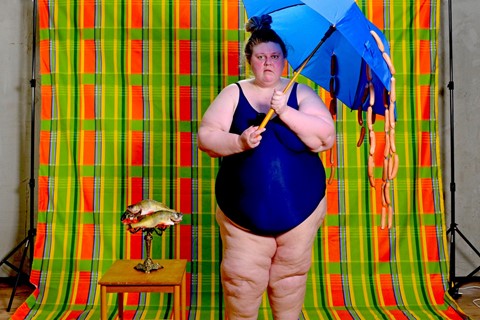As her new exhibition opens at New York’s MoMA PS1, the Finnish photographer shares the story behind her deadpan self-portraits, which she shoots alone at her apartment in Turku
Finnish photographer Iiu Susiraja has always sought out the extraordinary, whether photographing nature as part of her curriculum at school or later in her career – which has recently led to her first solo museum exhibition in the US, at MoMA PS1. In this show, which is titled A style called a dead fish, over 50 photographs trace the artist’s self-portraits in which she poses alone at her apartment in Turku, surrounded or covered by mundane objects in different rooms. “I get bored with a clean landscape picture. My interest is immediately aroused if I see, for example, garbage in there,” she tells AnOther. “The same thing happens with humans. I’m immediately interested if a person has a scar on their face.”
Susiraja’s approach to her lens is both liberated and regimented: she is always the only person in her compositions, situated in unassuming domestic settings with an aloof expression under crisp lighting. On the other hand, she commits to a daringly deadpan humour in which Susiraja dons accessible daily objects in tongue-in-cheek fashions that ridicule their purposes while satirising her own way of associating with them. “Humour is part of me,” she explains. “Everything that is done too consciously in art is not necessarily reflected in the work in a good way.”
In the show, the images feature an umbrella full of rubber ducks covering up Susiraja’s otherwise bare crotch like a fruit bowl, or some fruit peel perched on her foot made up like a smiley face. The key to orchestrating an image with a punchline is her selection of objects with no particular character. “Consider a bath duck – it has to be a basic bath duck. It must not be too far-fetched in design,” the artist who has a background in textile design admits. “Quite often, I choose an object based on how much I feel drawn towards it; then the end is something magical that I can’t explain, like art’s inexplicable process.”
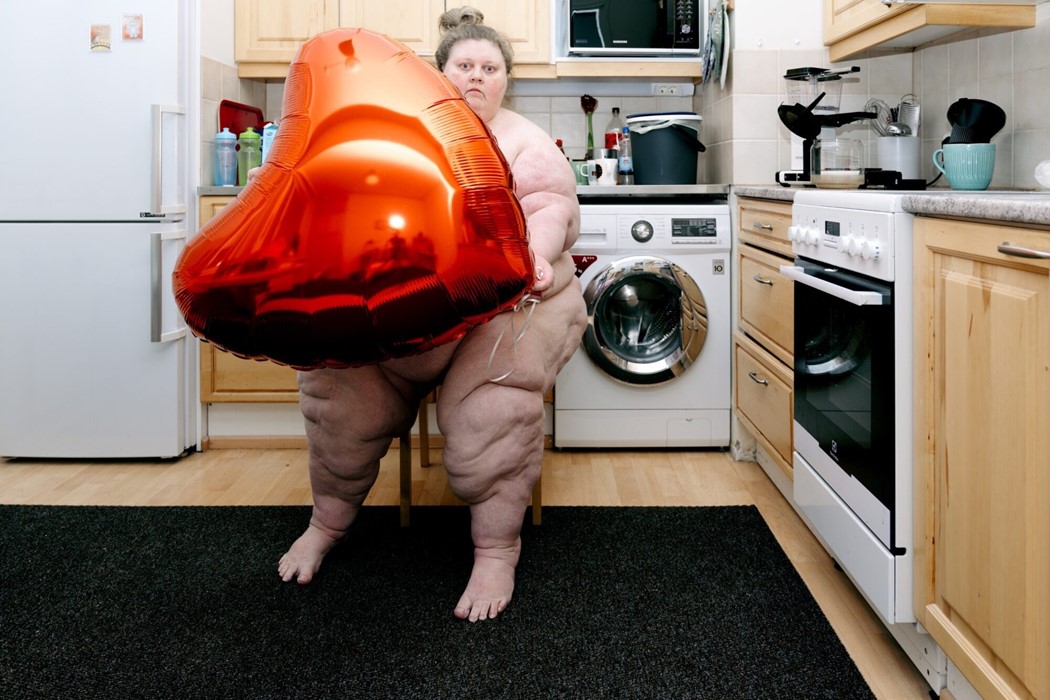
The attraction in Susiraja’s images stems from a medley of ease and precision. The juxtaposition of a heart-shaped balloon that covers her naked body in her kitchen feels given, as much as the plastic mannequin hand that pokes out from between her legs in her living room. Detached yet in direct communication with the viewer, a performance in each shot is a fundamental part of the process. “I don't choose how much is performance or organic,” she notes. “I have tried to train myself to be more relaxed and to trust chance.” She tests out her gestures and posture, and “compulsion therefore acts as a good teacher for change.”
Susiraja’s direct gaze dares us to look her in the eye, all while the artist – her own muse and cameraman – assumes the narrative potential of photography both before and behind the camera. “When you’re alone, you don’t have to socialise and try to please, so loneliness, in this case, is the same as freedom,” she says. Although she is singular in each frame, the viewer is always invited into her home through her grasping stare. “In school pictures, the photographer has always told us to look at the camera, and it could be that the fact that I look at the camera is based on this,” she thinks.
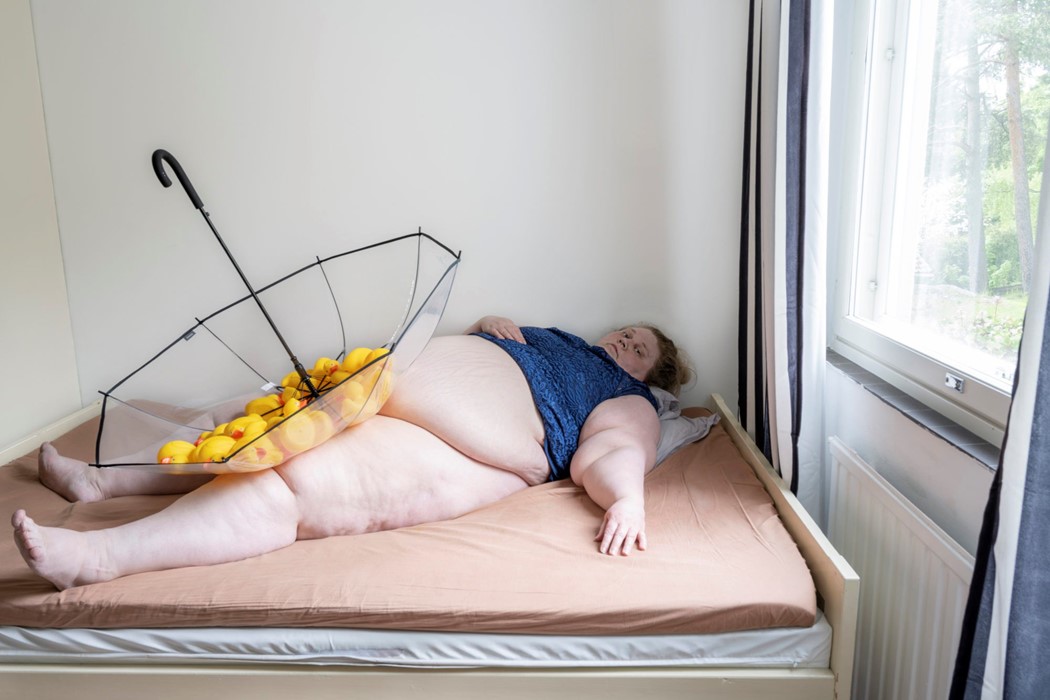
The photographs’ effortless quality – despite her theatrical juxtapositions – also come from her natural use of light. Shadowless and clear, the illumination in Susiraja’s images feels secondary, more so in the service of her arrangement of her body and the objects. She admits “not thinking too much about the lights; it’s not my style.” The windows of her house and the angle of the sunlight often determine where she positions herself. Finland’s limited number of sunny days imposes its challenge, but when she relies on flash, she “doesn’t aim for naturalness. The hardness of the flash must be visible.”
What is always crystal clear for Susiraja is the picture before the camera snaps her. “I see in my mind a very detailed image of the finished photograph,” she says. “My gaze wanders around, checking how everything works.” Working with the unpredictability of everyday objects bears chance results, as well. One of her newest photographs, Swan (2023) – which will be exhibited in her upcoming solo show at Nino Mier Gallery in New York – required her to pose with a tape stuck on her leg. The tape refused to stay on her sweaty skin during the photo shoot, and the resulting image is eventually about the challenge.
A style called a dead fish by Iiu Susiraja is on show at MoMA PS1 in New York until 4 September 2023.
